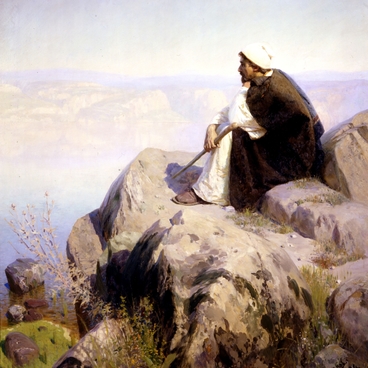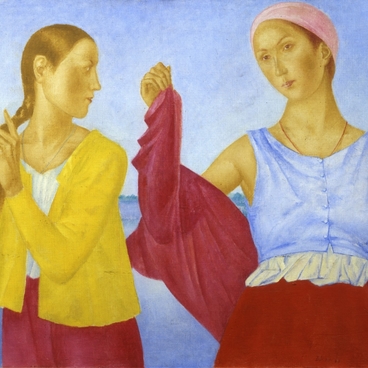The portrait of Charlotte Cristina of Braunschweig-Wolfenbuttel (1694 - 1715) is the earliest work in the museum collection of Russian art of the 18th century. It was created by an unknown Polish artist in the 1700-1710s. The author painted the wife of Prince Alexey, the son of Peter I.
Charlotte Cristina was the first foreign princess in Russia. Since the days of Peter I members of the imperial family began to enter into international marriages that served as a ‘political tool’ and established a strong connection between the ruling dynasties of two countries.
The initiator of the marriage of Prince Alexey and Charlotte Cristina was the Polish king. The Russian side considered it a profitable deal - the bride was a relative of the queen of Prussia Elizabeth Cristina and archduchess of Austria Maria Theresa. Thus Peter I wanted to secure support of Austria in the future war with the Turks.
The portrait was painted shortly before the wedding, presumably by one of the Polish court artists. Charlotte Kristina on the portrait is no more than 15 years old. Researchers believe that this image most accurately shows the appearance of the model.
Charlotte Christina’s light, porcelain skin stands out dramatically against the dark background. The artist depicted her in a gold brocade dress and a red ermine cape. Blue ribbons are woven into the white powdered hair of the bride. The princess’s big brown eyes look directly at the audience, while thickly rouged cheeks and bright lips match the fashion of the time.
The artist creates the color solution of the painting using muted dark shades. The painter used black to draw the flat background, and for Charlotte Christina’s clothes - shades of red, blue and gold. The contrast of the model’s bright dress and the dark back enhances the ‘liveliness’ and youthfulness of the girlish image.
The author built the composition of the portrait according to the traditional scheme: an oval, inscribed in a quadrangle, a bust image and the posture of the head in three quarters. The picture is classified as belonging to the genre of ‘ceremonial portrait’, the main purpose of which is to emphasize the high position of the model in the society.
However, here the artist rejected the idealization that was typical of the ceremonial portrait. He created a lively and sincere image of a young girl, and showed the character of the princess, her spontaneity and some eccentricity.
The portrait was submitted to the Radishchev Museum in 1920 from the collection of the Saratov Museum.
Charlotte Cristina was the first foreign princess in Russia. Since the days of Peter I members of the imperial family began to enter into international marriages that served as a ‘political tool’ and established a strong connection between the ruling dynasties of two countries.
The initiator of the marriage of Prince Alexey and Charlotte Cristina was the Polish king. The Russian side considered it a profitable deal - the bride was a relative of the queen of Prussia Elizabeth Cristina and archduchess of Austria Maria Theresa. Thus Peter I wanted to secure support of Austria in the future war with the Turks.
The portrait was painted shortly before the wedding, presumably by one of the Polish court artists. Charlotte Kristina on the portrait is no more than 15 years old. Researchers believe that this image most accurately shows the appearance of the model.
Charlotte Christina’s light, porcelain skin stands out dramatically against the dark background. The artist depicted her in a gold brocade dress and a red ermine cape. Blue ribbons are woven into the white powdered hair of the bride. The princess’s big brown eyes look directly at the audience, while thickly rouged cheeks and bright lips match the fashion of the time.
The artist creates the color solution of the painting using muted dark shades. The painter used black to draw the flat background, and for Charlotte Christina’s clothes - shades of red, blue and gold. The contrast of the model’s bright dress and the dark back enhances the ‘liveliness’ and youthfulness of the girlish image.
The author built the composition of the portrait according to the traditional scheme: an oval, inscribed in a quadrangle, a bust image and the posture of the head in three quarters. The picture is classified as belonging to the genre of ‘ceremonial portrait’, the main purpose of which is to emphasize the high position of the model in the society.
However, here the artist rejected the idealization that was typical of the ceremonial portrait. He created a lively and sincere image of a young girl, and showed the character of the princess, her spontaneity and some eccentricity.
The portrait was submitted to the Radishchev Museum in 1920 from the collection of the Saratov Museum.



